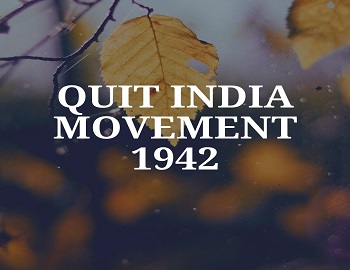Table of Contents
Shivaji’s Administration and Achievements:
Shivaji’s administrative system was largely borrowed from the administrative practices of the Deccan states. Shivaji’s ministry of eight departments was a convenient system for dividing administrative work. Six out of his eight ministers were actually employed in military operations, when required, without getting respite from their respective administrative duties. Of the eight ministers, the Peshwa or Prime Minister was to exercise supervision over the rest. The other ministers were the Amatya (in charge of the revenue), the Sachiv (in charge of finance), the Senpati (commander-in-chief), the Mantri (personal adviser), the Sumant (foreign minister), the Nyayadhish (minister of justice) and the Panditrao (minister of charities and religion). Shivaji was a thorough autocrat as everything depended on him. The ministers formed an advisory body with no independent power. Shivaji was a practical administrator. He preferred to give cash salaries instead of granting jagirs. According to him “a jagirdar is rarely honest”.
Shivaji’s kingdom was divided into several provinces (prant), which were subdivided into praganas and tarafs. The village was the lowest unit over which were placed hereditary Deshmukhs and Deshpande. According to Sabhasad, Bakhar, the state demand of the land revenue was two-fifths of the produce in grain. Shivaji supplemented his revenue by imposing Chauth and from regions not recognizing his sovereignty. The contributions amounted to one-fourth of the land revenue. In fact, this was a kind of protection money against Maratha inroads, extorted yearly from areas outside Shivaji’s immediate jurisdiction. Shivaji’s next claim was Sardeshmukhi. This claim which amounted to 10 percent of the revenue was based on Shivaji’s claim to be head of the Deshmukhs, the dominant families of the parganas.
Shivaji was fully conscious of the aftermath of more than continuous warfare for 30 years. He worked to rebuild Maharashtra by encouraging taqqavi (developmental) loans and commanding his army not to disturb cultivators. He laid down definite regulations for tax collection. At the top was an advisory council; at the bottom, he framed rules for the measurement of agricultural land.
Military System:
Shivaji’s army was mostly composed of light infantry and light cavalry. There were two classes of troops- Silahdars and Bargirs. Silahdars brought their own horses and weapons and received a large pay while the Bargir was equipped with horses and arms by the state. Shivaji usually paid his soldiers in cash, but sometimes the chiefs received revenue grants (saranjam). Bodies of spies were attached to every regiment. Strict discipline was enforced in the army and even a little dereliction was punished with severity. The French envoy Germain wrote in July 1677:
“The camp of Shivaji was without pomp, without women; there were no baggages, only two tents but of simple cloth, coarse and very scanty, one for him and the other for his prime minister.”
The vital cogs in Shivaji’s military machine were the innumerable forts dotted in various parts of the country. Shivaji was aware that ‘forts had important symbolic value. They were the physical manifestation of supra-local power, virtually the only one in Maharashtra’. Forts became a necessary adjunct to his guerilla system of warfare. Every fort was under three officials of equal status- the havaldar, the sabnis, and the sarnobat, each acting as a check on others. The main forts are on the highest points of the Sahyadri range. Of all the forts, Raigarh, his capital, and Pratapgarh were the most important. Sindhudurg of Malvan, Vijaydurg, Suvarnadurg, and Kolaba were the main naval fortifications. At the time of his death, there were 240 forts in his possession.
After his conquest of the Konkan, Shivaji realized the necessity of a navy. Moreover, he had to contend with the Siddis of Janjira. These Sidis, originally natives of Abyssinia, first came to India in the fifteenth century and established a small colony on the western coast. Their impregnable island fort, known as Janjira and situated about 45 miles south of Bombay, was an object of jealousy to the Marathas. To strengthen his own power on the West Coast, 400 vessels of various sizes and classes- ghurabs, gallivats, and river crafts- were formed under two admirals. In his contest with the Sidis, Shivaji built the four strong fortresses of Sindhudurg, Vijaydurg, Suvarnadurg, and lastly Kolaba with adequate naval equipment. In his succinct style, Sabhasad Bakhar wrote: ‘The Raja put the saddle on the horse.’
Achievements:
With dogged determination, Shivaji set up an independent state in opposition to both Bijapur and the mighty Mughal Empire. According to Sir Richard Temple, Shivaji was ‘the man who raised an abject race from nothingness unto empire. Besides, Shivaji was a great administrator.’ He created a compact military state and elevated the Maratha nation to the highest pedestal of glory. In his political and military administration, he associated not only Brahmins, and Prabhus, but also Bhandaris, Kolis or Ramoshis, Mahars, and Mangs. His administrative and military systems were his own creation. He was not only the maker of the Maratha nation but also the greatest constructive genius of medieval India. In the words of Dir Jadunath Sarkar:
“[Shivaji] was the last great constructive genius and nation-builder that the Hindu race has produced. He called the Maratha race to a new life. He raised the Marathas into independent self-reliant people, conscious of their oneness and high destiny, and his most precious legacy was the spirit that he breathed into his race. He has proved by his example that the Hindu race can build a nation, found a state, defeat enemies; they can conduct their own defense, protect and promote literature and art, commerce, and industry, can maintain navies and ocean-trading fleets of their own and conduct naval battles on equal terms with foreigners. He taught the modern Hindus to rise to the full stature of their growth.









Comments (No)